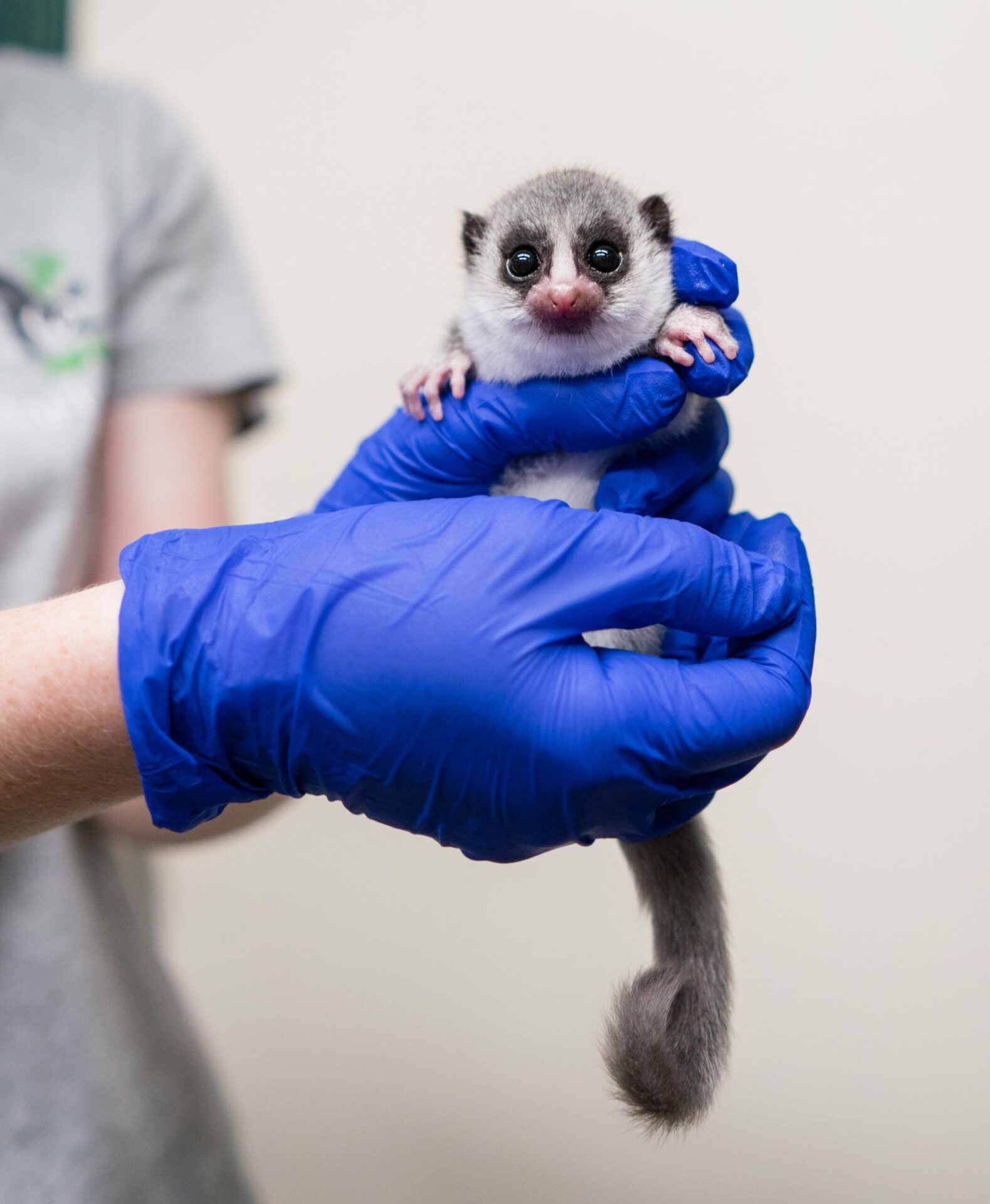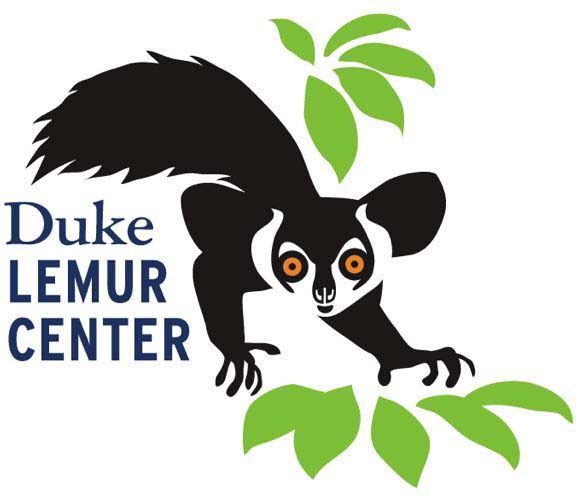
Myna, a fat-tailed dwarf lemur (Cheirogaleus medius), was born to parents Sandpiper and Thrasher on June 3, 2020. Welcome to the DLC family, Myna! Photo by Sara Clark.
CHONK ALERT! When you think “baby dwarf lemur,” you probably think “small.” But Myna (named after the talkative myna bird) is very BIG for her age—and species!
Myna has been growing like a weed since she was born on June 3, 2020, and her keepers are very impressed with how big and strong she is. Luckily, dwarf lemurs don’t carry their young on their backs or bellies like many other lemurs do; so parents Sandpiper and Thrasher don’t have to worry about anything except making sure they get their fair share of the food!
Since fat-tailed dwarf lemurs like Myna are the only truly hibernating primate, getting enough food is crucial, since it allows them to store fat in their tails — which fuels them through their annual hibernation period. Dwarf lemurs will store up to 40% of their total body weight in their tails to prepare for a hibernation season that could last up to seven months, during Madagascar’s dry season.
Join us for BABY WEEK 2020!
The Duke Lemur Center has welcomed numerous infants this summer through our conservation breeding program, and we’re announcing six — yes, SIX! — of the newest babies this week! Here’s how to make sure you don’t miss ANY of these special announcements, or the accompanying photos and videos:
Follow us on Facebook: Visit our Facebook page, click “Follow,” and select “See First” from the dropdown menu
Like us on Instagram: Search for @dukelemurcenter
Learn more
Learn more about these fascinating animals on our Meet the Lemurs page.
DLC research scientists Marina and Lydia recently returned from the rainforests of Madagascar’s high plateau, as part of their ongoing research project on hibernation in dwarf lemurs. Learn more about their expedition – and see lots of great pictures, too! – in their most recent blog post, “Studying Dwarf Lemur Hibernation: A research expedition to Madagascar.”
Intrigued but don’t have time to read a full article? Learn about dwarf lemur hibernation in just 200 words!
How you can help dwarf lemurs
Adopt Raven, a fat-tailed dwarf lemur: If you want to learn more about fat-tailed dwarf lemurs AND help support their care and conservation, please consider symbolically adopting Raven, a female fat-tailed dwarf lemur, through the DLC’s Adopt a Lemur Program! Your adoption goes toward the $8,400 per year cost it takes to care for each lemur at the DLC, as well as aiding our conservation efforts in Madagascar. You’ll also receive quarterly updates and photos, making this a fun, educational gift that keeps giving all year long! Adoption packages start at just $50. Please visit our Adopt a Lemur homepage to learn more.
Send a “baby shower” gift: Dwarf lemurs LOVE soft, fuzzy beds and sleeping pouches! (Check out some cute photos here!) Make a dwarf lemur’s day (or night) by sending a special gift in Myna’s honor via the DLC’s amazon.com wishlist!
Contribute to baby Myna’s “scholarship fund”: Did you know it costs $8,400 per year to care for one lemur at the DLC — including baby Myna? We rely upon donations from individuals like you, who personally invest in our work to care for lemurs and protect their habitat in Madagascar. To learn more about the DLC’s “return on investment,” please see our 2019 stewardship booklet. A heartfelt THANK YOU for your support — we couldn’t do this work without you!

